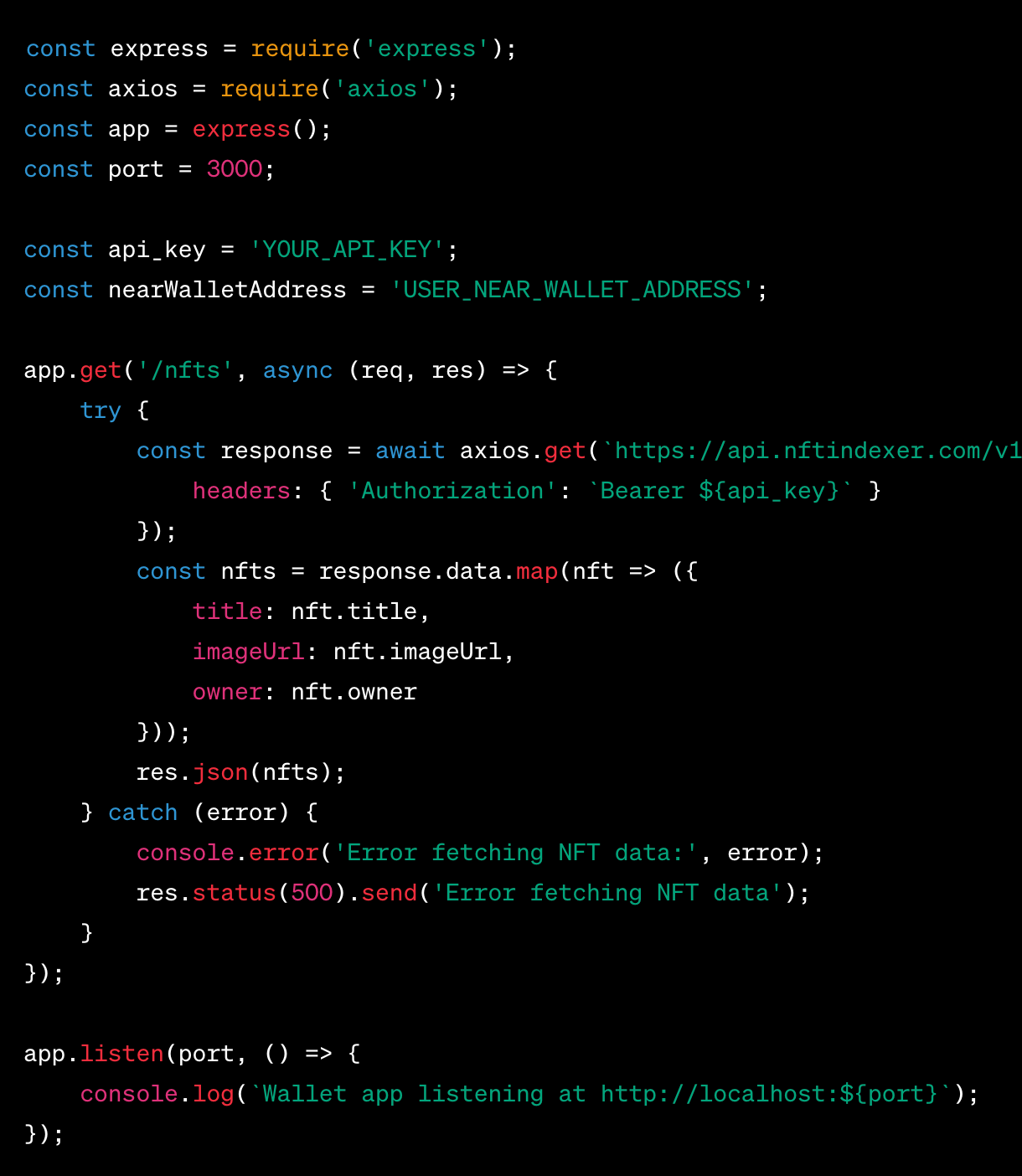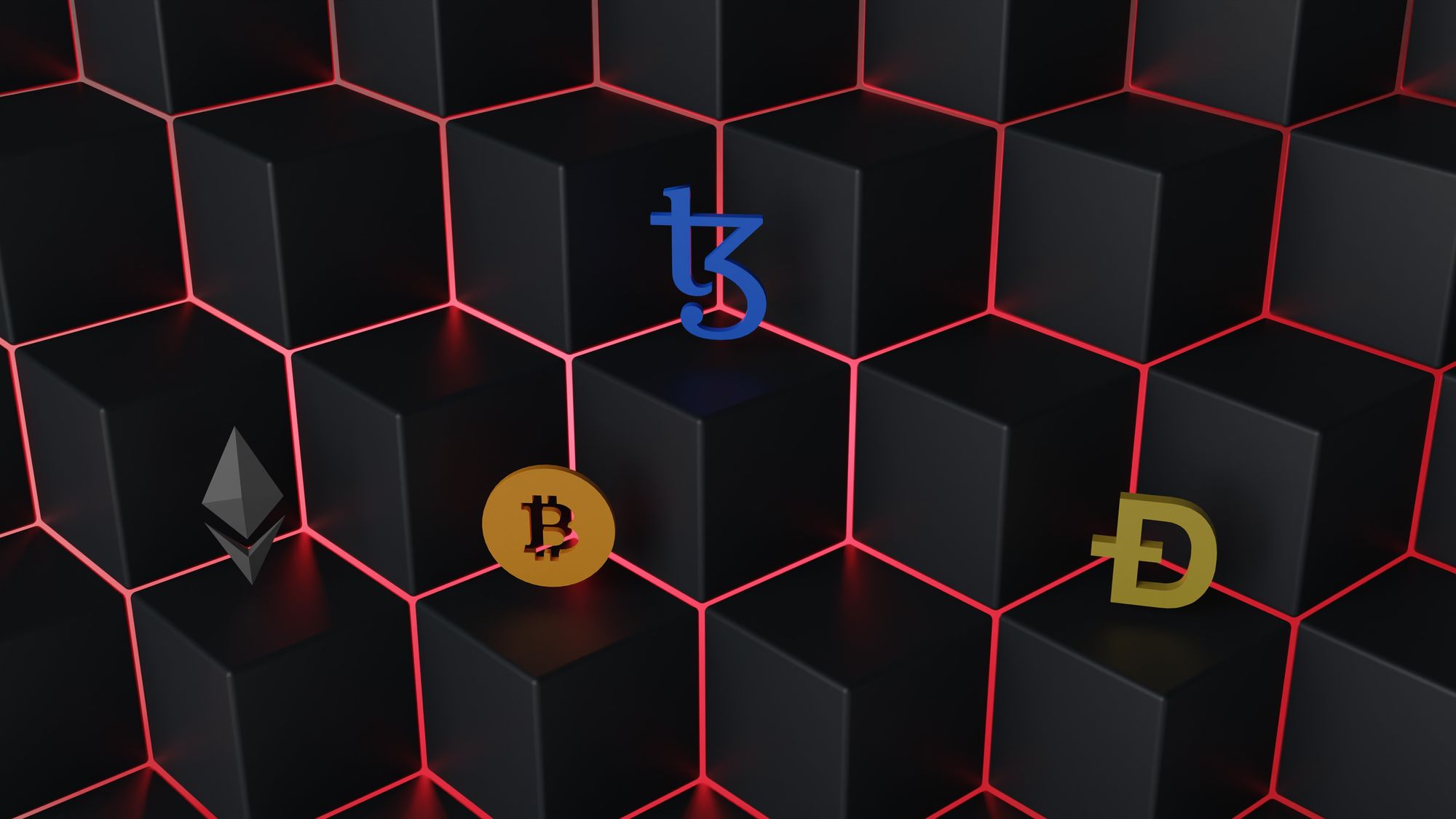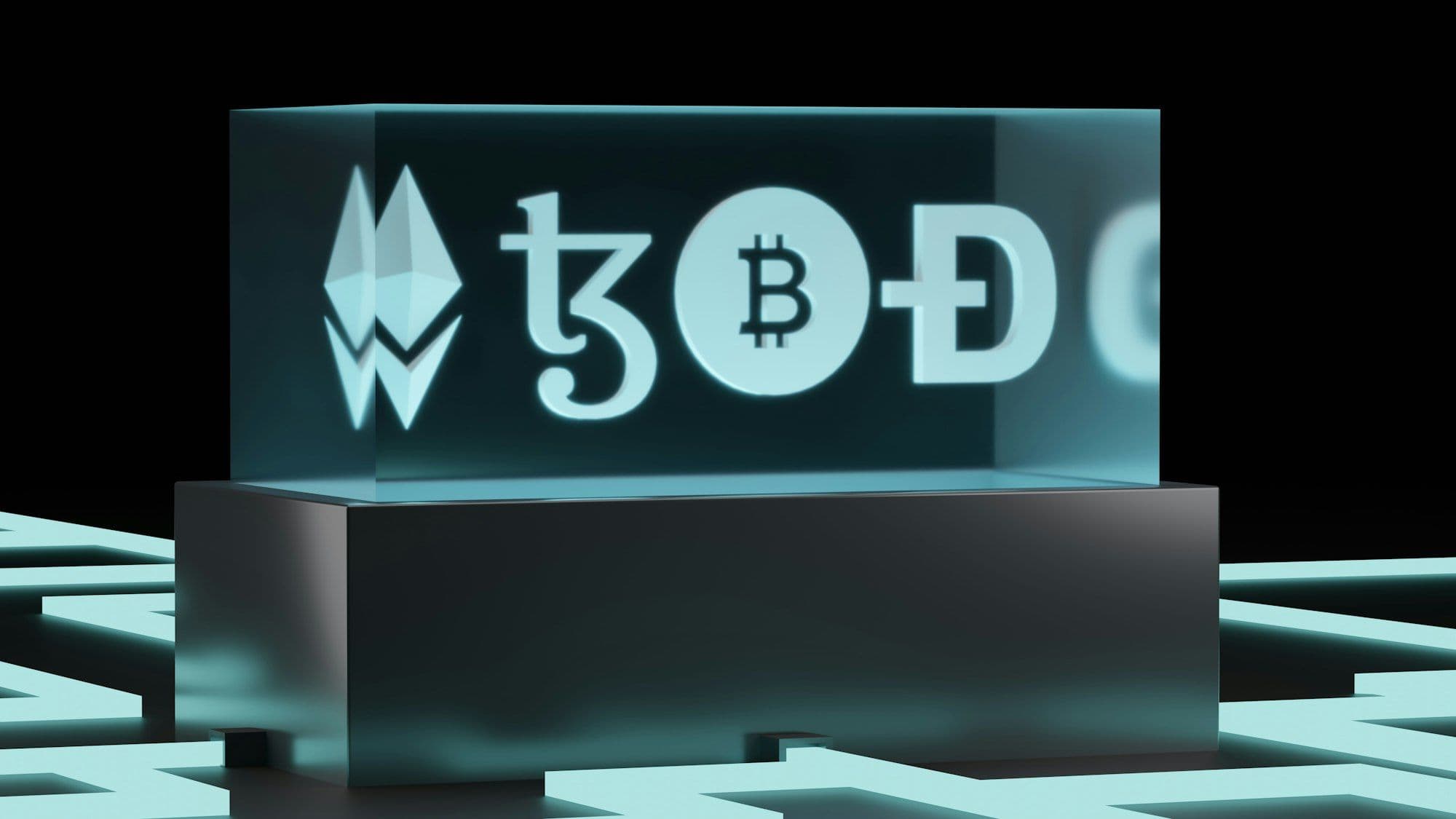
Before diving into the development process of how to use an NFT Indexer API to build a wallet application on NEAR, You’ll have to understand what NEAR is and what an NFT indexer API does.
Understanding How to use NEAR and NFT indexer API
NEAR Protocol, a user-friendly and scalable decentralized platform, is ideal for developers creating decentralized applications (dApps). Its technical prowess lies in the Nightshade sharding mechanism, which significantly boosts transaction speed and lowers costs. For those new to blockchain, think of NEAR as a powerful yet accessible foundation for building dApps.
On the other hand, an NFT indexer API is a tool for accessing detailed NFT information, such as who owns a particular NFT, its unique attributes, and its transaction history. When integrated with NEAR, these APIs allow developers, even beginners, to seamlessly incorporate NFT features into their dApps. This process involves making API requests to gather NFT data, which is then efficiently handled and displayed in the NEAR-based application, capitalizing on NEAR's fast and cost-effective transaction capabilities.

First: Choose the Right NFT Indexer API
Your first step is to carefully select an NFT indexer API that aligns with NEAR Protocol. This choice is pivotal as the API acts as your primary conduit to NFT data. Key features to consider include comprehensive data coverage, ensuring access to detailed NFT metadata, ownership details, and transaction history; speed of data retrieval, which is crucial for maintaining application efficiency and user experience; and reliability, as a stable API ensures consistent uptime and accurate, real-time data representation. This selection forms the technical backbone of your application, influencing both its functionality and performance.
Second: Set Up Your Development Environment
Choose your tech stack wisely. For a NEAR wallet application, you might consider:
Front-end:
Choosing between React and Vue.js depends on your project needs and team expertise. React, backed by Facebook, offers a vast ecosystem and robust community support, making it ideal for complex, dynamic applications. Vue.js, on the other hand, is renowned for its simplicity and ease of integration, suitable for those new to front-end development or when working on lighter applications.
Back-end:
Node.js is a popular choice due to its efficiency and the seamless integration it offers with JavaScript-based front-end frameworks. Its non-blocking I/O model ensures high performance, which is essential for handling the concurrent requests typical in a wallet application.
NEAR SDK:
This is a critical component for interacting with the NEAR blockchain. The SDK simplifies complex blockchain interactions, such as executing smart contracts or processing transactions, making it accessible even for developers with limited blockchain experience.
Database:
MongoDB, a NoSQL database, is ideal for applications that require flexibility to handle large amounts of unstructured data. PostgreSQL, a relational database, is better suited for applications needing complex queries and data integrity. The choice depends on your data structure and the scalability needs of your application.
Third: Implement User Authentication
Integrating a secure login system is crucial. NEAR's wallet authentication offers a user-friendly and secure login method. It works by redirecting users to their NEAR wallet to confirm their identity, then back to your app post-verification. This process, facilitated by NEAR's SDK, simplifies user authentication, enhancing security while reducing development complexity.
Fourth: Integrate the NFT Indexer API
This is where you connect your application to the blockchain world. Use the API to fetch NFT data associated with user wallet addresses. Handle API responses efficiently to display NFT information in your application.
Fifth: Interact with the NEAR Blockchain
Utilize NEAR's JavaScript SDK (near-api-js) for blockchain interactions. This includes sending and receiving transactions and smart contract operations.

Sixth: Design a User-Friendly Interface
The UI/UX should be straightforward and user-centric, enabling easy management and viewing of NFTs. Focus on creating a clean layout and ensuring the design is responsive across various devices. This approach not only improves the overall user experience but also makes your application accessible and engaging. A well-thought-out interface can greatly influence user satisfaction and the usability of your wallet application.
Seventh: Prioritize Security
Dealing with digital assets means security cannot be an afterthought. Implement best practices to protect user data and transactions. Regularly update your application to patch any vulnerabilities:
- Encryption and Secure Connections: Utilize strong encryption methods for data transmission. Implement HTTPS to secure the connection between the user's device and your application, safeguarding against interception of sensitive data.
- Secure Storage of Sensitive Data: Any sensitive data, such as private keys or user information, should be securely stored. Use encryption for data at rest and ensure that your database has robust security measures in place.
- Authentication and Authorization: Implement multi-factor authentication (MFA) for user accounts to add an extra layer of security. Ensure that your application has strict authorization checks, so users can only access and perform actions within their permission scope.
- Regular Security Audits and Updates: Conduct regular security audits to identify and address vulnerabilities. Keep your application and its dependencies up to date with the latest security patches. This is crucial as new vulnerabilities are constantly being discovered, and staying updated is key to protecting against them.
Eighth: Testing and Deployment
Thorough testing is non-negotiable. Ensure every feature functions as intended and the integration with NEAR and the NFT indexer API is seamless. Once satisfied, deploy your application.
Example Code: Enhanced
Consider this enhanced Node.js example vis Javascript, which includes error handling and response parsing:


Final Thoughts:
To wrap it up, building a wallet application on NEAR using an NFT indexer API is an exciting project to get into the landscape of blockchain and NFTs. It requires a blend of technical skills, security awareness, and a keen eye for user experience. As the blockchain space continues to grow, applications like these will become increasingly significant, offering users a gateway to manage their digital assets efficiently and securely.
If you're planning to build a wallet app on the NEAR blockchain, using Indexer.xyz can be a great choice. They offer easy-to-use Indexing APIs that provide an efficient gateway to a wealth of NFT data. This integration will not only streamline your application's functionality but also enrich the user experience. It's a smart way to help people easily handle and understand their NFTs on NEAR.



